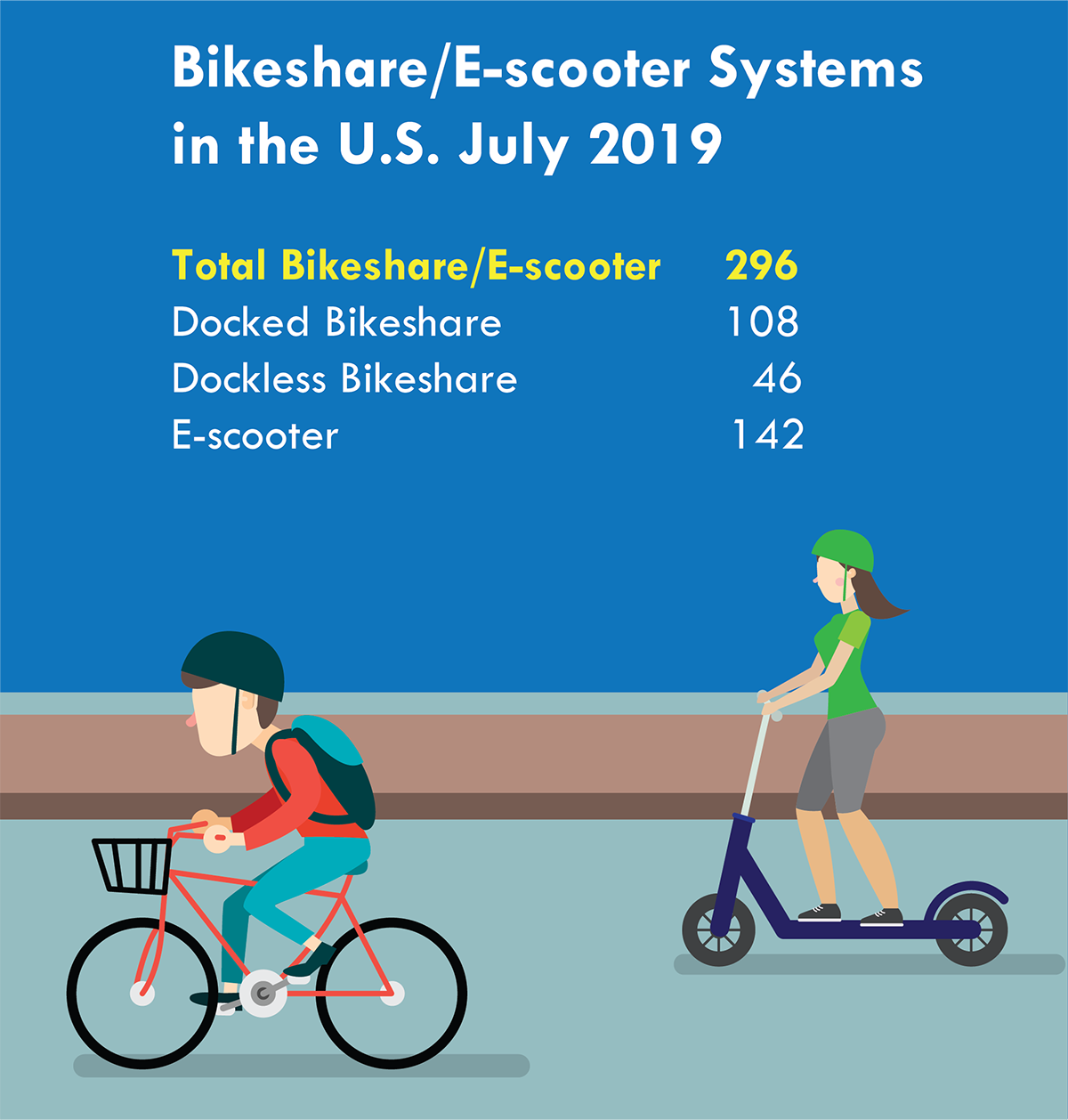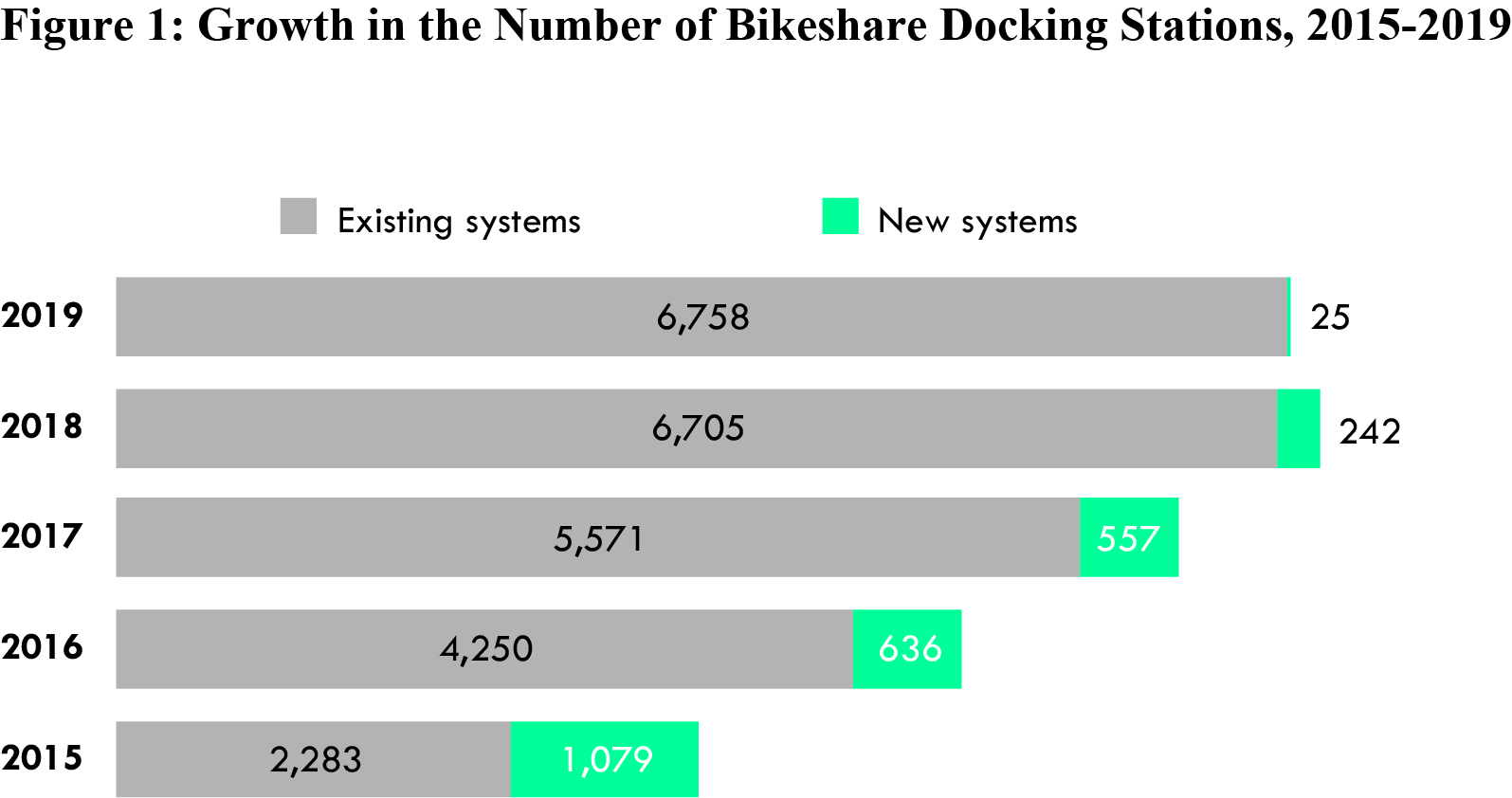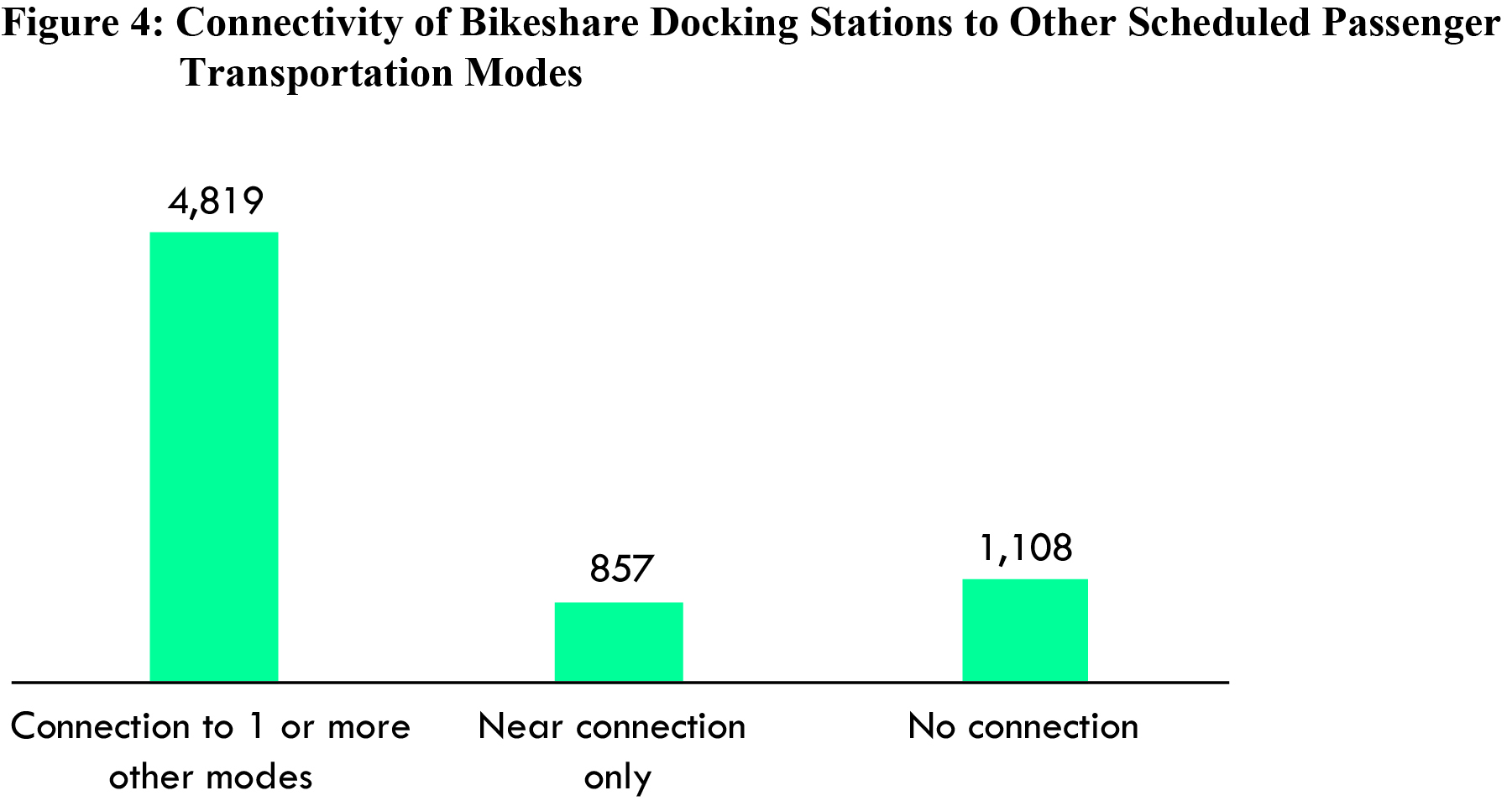New BTS Interactive Map Shows Growth of Urban BikeShare/E-scooter Systems
U.S. Department of Transportation sent this bulletin at 09/25/2019 11:01 AM EDT |
|
Having trouble viewing this email? View it as a Web page. |
New BTS Interactive Map Shows Growth of Urban BikeShare/E-scooter Systems

The U.S. Department of Transportation’s Bureau of Transportation Statistics today released a new interactive map that documents the rapid growth of bikeshare (docked and dockless) and e-scooter systems across the country from 2015 to 2019. The total number of these systems has reached almost 300 serving more than 200 cities as of July 2019.
Of 108 docked bikeshare systems in operation, 83 launched across the U.S. from 2015 through July 2019. Bikeshare systems added a net of 1,197 docking stations, bringing the total number of docking stations to 6,783 as of July 2019 (figure 1).

More than 30 systems operate across multiple cities, bringing the total number of cities served to more than 200. On average, there are 63 docking stations operated by a system, with the largest system (Citi Bike in New York City) operating over 800 stations while 27 systems have 10 or fewer stations (figure 2).
Only docked bikeshare systems open to the general public are included in the count. College, employer, and resident docked bikeshare systems are not counted.

BTS’ interactive bikeshare and e-scooter map shows, by city, the name of the bikeshare system (docked or dockless) and/or e-scooter system serving it for every year from 2015 to 2019. For cities with a docked bikeshare system, the map can be zoomed to the locations of the docking stations at the street level.
Dockless bikeshare systems and e-scooters first appeared in the U.S. in 2017 and have expanded coverage since then. As of July 2019, dockless bikeshare systems serve 38 cities and e-scooters serve 100 cities (figure 3).

The bikeshare systems with fixed docking stations are part of BTS’ Intermodal Passenger Connectivity Database (IPCD).The IPCD is a nationwide database of passenger transportation facilities and bikeshare docking locations, with data on the availability of connections to: intercity, commuter, and transit rail; scheduled air service; intercity and transit bus; intercity and transit ferry services; and bikeshare.
Based on the IPCD, 71% of all bikeshare docking stations are within one block of another public passenger transportation mode and an additional 13% are within two blocks (figure 4).

Connection to one or more other modes indicates the number of bike-share stations located directly outside, or within one block of another scheduled public transportation mode. “Near connection only” means a connecting mode is within one to two blocks of a bike-share station. “No connection” means no other scheduled public transportation is within two blocks.

